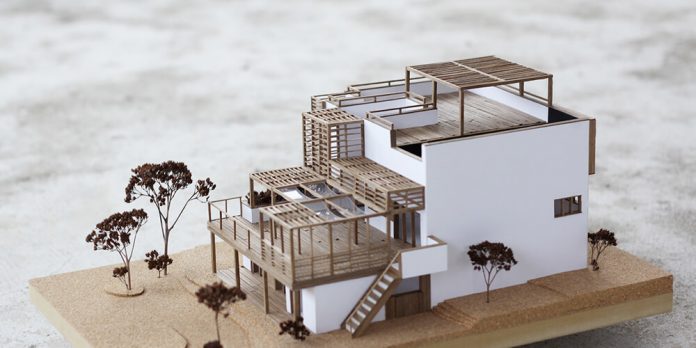Are you making a conceptual model or a presentation model? Model-type is one of the factors that determine the kind of materials to be used in model-making. A presentation model will require finer and higher-quality materials than a conceptual or a working model. Architectural models Australia are some masterpieces in the model-making industry. Factors such as material durability and workability play essential roles in choosing a material.
Some materials used in the architectural model making are listed below.
1. Cardstock
Cardstock is thicker and sturdier in comparison to paper. It also comes in a variety of colors that makes it suited for site programming models.
2. Card and cardboard
This pair is available in different colors, weights, and finishes. Cardboard is mostly used to show paths, roads, and terrain by putting them layer upon layer.
3. Kraft board
Kraft board is commonly used when making large scale models meant to show the relationship between a building and its surroundings. The edges typically have a fair roughness to them when cut.
4. Wood
There are different kinds of wood used in model making. The most common is Balsa, the softest commercial hardwood. Its softness and lightness make it the easiest to work with; it is painless to cut and joins easily with other wood using white glue. When stacked, Balsa portrays the best contour lines and has a good finish.
However, great caution should be taken when cutting vertically against the grain to eliminate rough, prickly edges. A laser cutter is recommended for safe operations.
5. Cork
Sometimes cork is used for surface or floor finishing.
6. Foam
Foam is excellent in expressing volume. It is lightweight, easy to cut, and most suited for large-scale context model-building. This foam serves well where large volumes are required. Also, being aesthetically pleasing, inexpensive, and readily available, foam is a university-student favorite.
The blue foam is often used in sculptural form productions.
7. Metal
Metals sheets can be used to demonstrate building finishes. Model bases, building façade, frames are some applications of metal in architectural modeling. Metal sheet surfaces are polished before usage as a way of enhancing their appearance. The sheets can be in copper, brass, aluminum, or steel form.
8. Clay and plasticine
Both have great workability as they are flexible and easy to knead and shape. Clay is one of the finest materials for architectural study models.
9. Flocking
This is a material to represent low-foliage landscapes like grass. Flocking is commonly used to convey well-kept masses of grass or grass carpets such as a golf course or football field.
10. Static grass
Some architects consider this a better alternative to flocking because of its more natural appearance. Static grass is made of tiny colored fibers. The fibers are charged with static electricity, making them stand straight when sprayed on a glue-covered surface.
11. Forest green bushes bag
This is a model making material used to make vegetation like shrubs, bushes, and trees. The forest-green color gives it an appealing, natural appearance.
Final Thoughts
Architectural models are more convincing and realistic in appearance, thanks to the range of materials available today. From workability to color and strength, these materials have significantly impacted architectural model-making.







